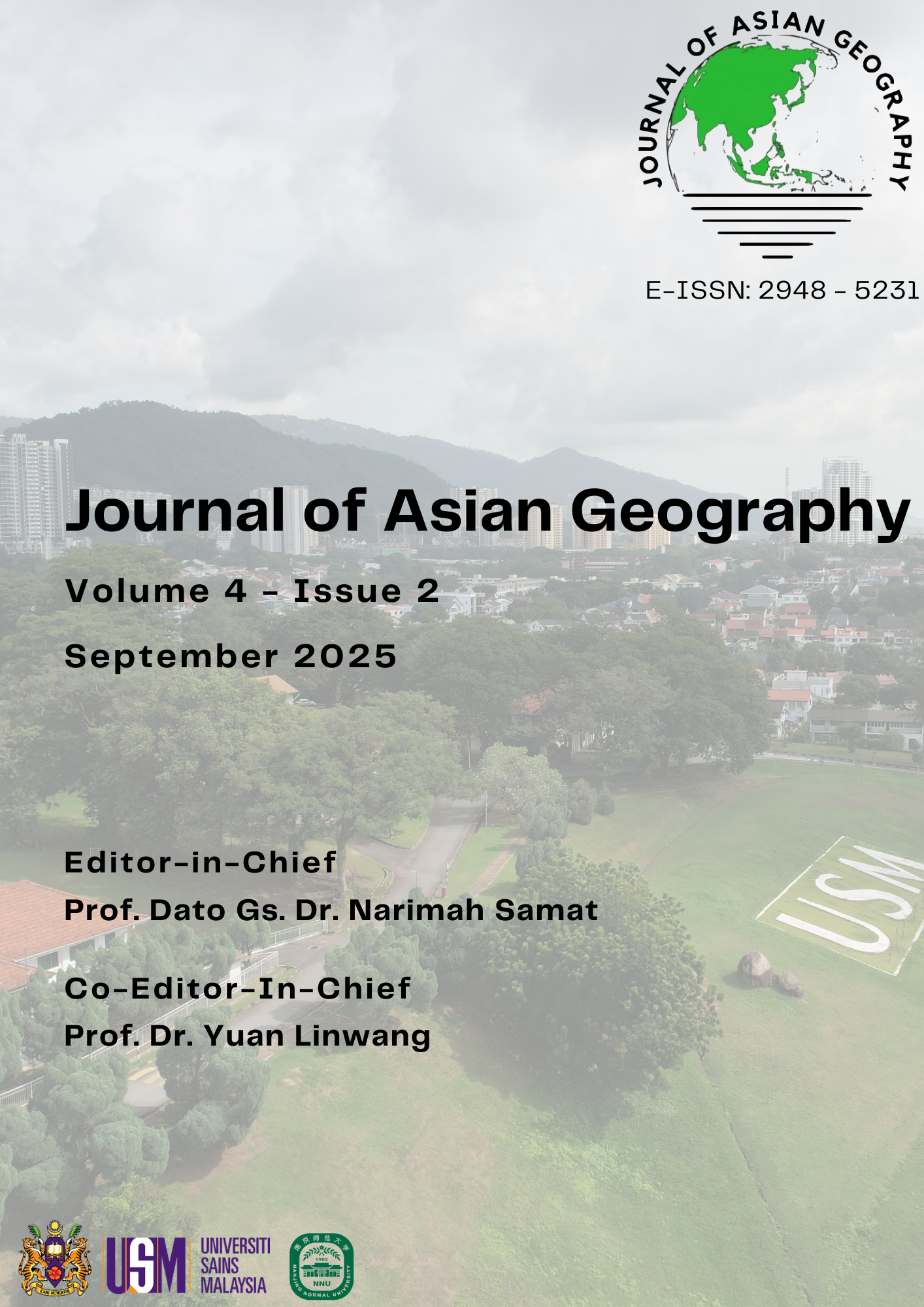Extraction of Drainage Networks in the Masamba Watershed Using NASADEM
DOI:
https://doi.org/10.36777/jag2025.4.2.1Keywords:
Extraction drainage networks, drainage pattern, NASADEM, Masamba watershedAbstract
The drainage network consists of all river channels that flow toward a reference point. It is bounded by a topographically defined distribution of drainage. The network begins with first-order streams that have no tributaries. Within a drainage network, one or more drainage patterns may be present. This study aims to extract drainage networks and identify drainage patterns in the Masamba watershed. The data used is NASADEM, analyzed through software-based spatial analysis methods. The analysis procedure includes sink filling, flow direction, and flow accumulation, as well as the eight-direction (D8) approach and Strahler’s stream ordering method. The results show that the Masamba watershed exhibits three drainage patterns: trellis, parallel, and dendritic. The trellis and parallel patterns occur mainly in the upstream part of the watershed, while the dendritic pattern dominates the middle and downstream areas. Based on these observations, the Masamba watershed can be classified as having a combined drainage pattern. In addition, stream orders were identified up to six levels, with the sixth-order stream representing the main river in the watershed. In 2020, a flash flood disaster struck the Masamba urban area, which is located in the downstream region. This indicates that drainage patterns have an influence on flooding. Information on drainage networks and patterns can serve as a guideline for governments, planners, and communities in addressing flood risks through sustainable watershed management approaches
Downloads
Published
Issue
Section
License
Copyright (c) 2025 Journal of Asian Geography

This work is licensed under a Creative Commons Attribution 4.0 International License.


